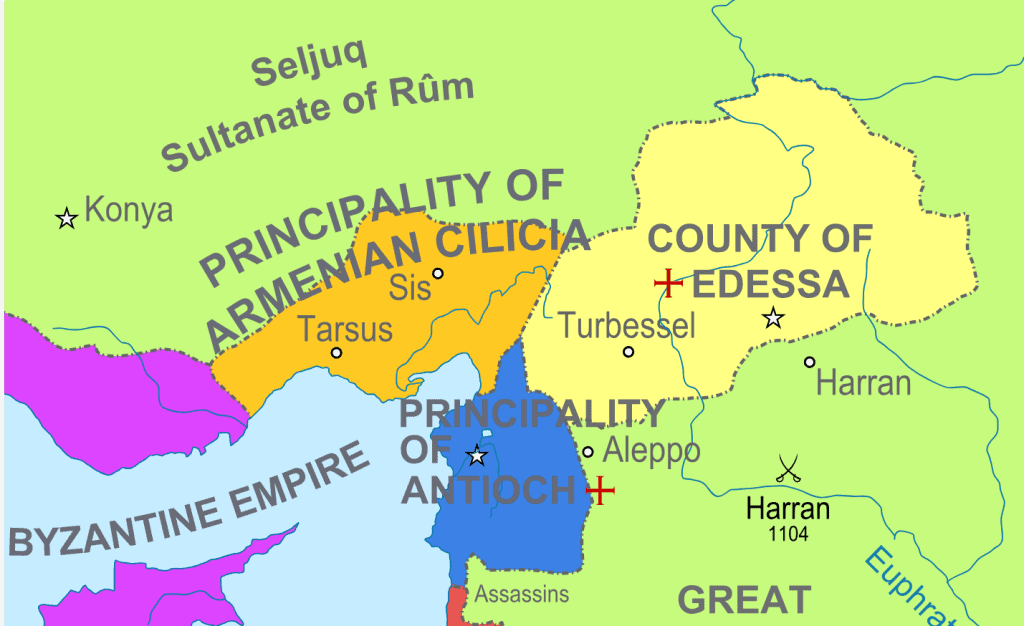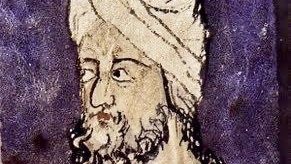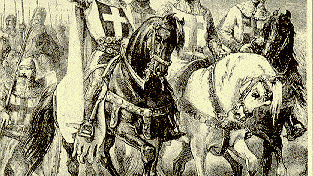In the annals of history, the County of Edessa may not be as well-known as some other medieval realms. Still, it is one of the first and most intriguing Crusader States established during the tumultuous Crusades. Let’s journey back in time to explore the rich history and unique characteristics of the County of Edessa.
Founding and Early Years:
The County of Edessa was established in 1098, during the First Crusade, after the capture of the city of Edessa (modern-day Şanlıurfa in Turkey). This marked one of the first territorial gains of the crusading armies in the Holy Land. The county was granted to Baldwin of Boulogne, who became Baldwin I of Edessa, and it served as a critical buffer state between the Byzantine Empire and the Muslim Seljuk Turks.

County of Edessa – Cultural Fusion:
One of the most captivating aspects of Edessa was its remarkable cultural fusion. Edessa was a melting pot of different cultures, religions, and traditions at the crossroads of the Christian, Muslim, and Byzantine worlds. This diverse environment led to the exchange of knowledge and ideas, making it a center of intellectual and cultural activity during the medieval period.
Fulk of Jerusalem
The Legacy of the Crusader State:
While Edessa’s existence as a Crusader State was relatively short-lived, lasting from 1098 to 1144, its impact was significant. The county served as a model for other Crusader States, showcasing the challenges and opportunities of governing in the Holy Land. Edessa’s rulers, including Baldwin II and Joscelin II, tried to stabilize and fortify their territory, though the rise of the formidable Muslim leader Zengi ultimately thwarted their efforts.
Tancred, Prince of Galilee

County of Edessa – The Fall of Edessa:
Tragically, Edessa fell to the forces of Zengi, the Atabeg of Mosul and Aleppo, in 1144. This marked a turning point in the history of the Crusades, as it was the first major Crusader State to be lost to Muslim forces. The fall of Edessa sent shockwaves throughout Christendom and galvanized further Crusading efforts.
Zengi

Edessa’s Lasting Impact:
So, while the County of Edessa may have existed relatively short, its legacy lives on. Its unique blend of cultures and role as a testing ground for Crusader governance make it a fascinating historical subject. The loss of Edessa also played a role in the subsequent Crusades, inspiring greater Western European involvement in the Holy Land.
Godfrey of Bouillon

Conclusion:
Lastly, The County of Edessa may not have the same level of recognition as Jerusalem or other major Crusader States. Still, its story is a captivating and important chapter in the history of the Crusades. So it serves as a reminder of the challenges and complexities Crusaders face in their quest to establish Christian dominion in the Holy Land. It also highlights the enduring legacy of cultural exchange and intellectual growth in the medieval world.

